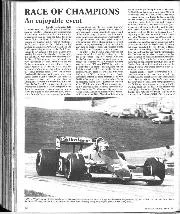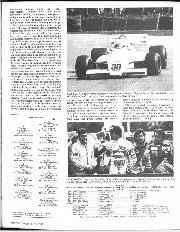More importantly he found his calling.
“I went to the Jim Russell Racing School [at Snetterton] on the advice of Jackie Stewart to Frank,” he says. “The caveat was that if I had the talent I could pursue racing as a career – and if not that I should return to university.
“When Jim said, ‘Hey, he’s one of the best we’ve ever had’ – I really believe he told everybody that so they would keep coming back – it was good for me.
“I was hooked.”
The rest of the 1970s were spent hustling for drives and sponsorship to climb the ladder: Formula Ford, Formula 3 and Formula 2.
By the early 1980s, however, Sullivan’s F1 dream seemed to have passed him by. He was back in The States racing Can-Am.
Luckily for him Tyrrell sponsor Benetton was casting its eye over the lucrative American market.

Sullivan with 1983 team-mate Michele Alboreto
Grand Prix Photo
“I got invited to a test at Paul Ricard in late November/early December 1982,” says Sullivan. “There were a whole bunch of drivers there and I was the last to go.
“Actually I had started to walk away from it and was getting out of my driving suit when my backer Garvin Brown – the heir to everything from Veuve Clicquot to Jack Daniel’s – said, ‘What are you doing?’
“I replied, ‘Have you seen the contract Ken just gave me?’ It was something like $10k for the first year, plus 40% of the prize money – and Ken would tell how much the prize money was.
“I even had to cover my own expenses. ‘Garvin, I can’t even afford to get to the races.’
“The start wasn’t my idea. I got hit from behind and had to swerve around the car in front.”
“He told me not to worry: ‘If you get the drive, I’ll take care of it.’”
A successful run led to a second invitation from ‘Uncle Ken’ – this time to the long pre-season tyre test at Rio.
“I sat there for eight days while they worked with [established number one] Michele Alboreto. Eventually I did a few laps before they fitted a used set of qualifiers. That was my test: five or six laps.
“I was only a couple of tenths slower than Michele and Ken said, ‘Well, you’ve selected yourself.’”
A solid if unspectacular performance in the subsequent Brazilian Grand Prix was followed by one of undoubted promise at Long Beach: Sullivan ran as high as fourth – ahead of the charging McLaren of eventual winner John Watson – before a tyre vibration relegated him to eighth, albeit still ahead of Alboreto.
“I was living at Brentwood in LA then because the European season hadn’t started yet,” he says. “But Ken called me on a Tuesday: ‘Michele can’t do the Race of Champions [he was busy sharing a Lancia with Riccardo Patrese at Monza’s clashing opening round of the World Endurance Championship]. Get on a ’plane. Come over.’”

Sullivan’s Race of Champions performance came despite previous day’s late night
Steve Powell/Getty Images
This time Sullivan ‘crashed’ in Greenwich with old F3 sparring partner Russell Wood, who insisted on maintaining their tradition of a pre-race curry.
Where perhaps one or two too many glasses of wine were drunk.
“Practice had gone okay,” says Sullivan.
The start from the outside of the third row would go even better: “It wasn’t like I had this great idea to dive around the outside. I got hit from behind and had to swerve around the car in front.”
In this fashion Sullivan not only passed the Arrows A6 of former world champion Alan Jones – in the second and final race of his abortive first comeback – but also drew alongside Watson.
He hung around the outside at Paddock before completing the move on the McLaren MP4/1C on the brakes as he angled towards the apex at Druids.




